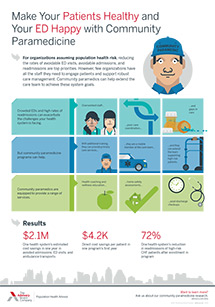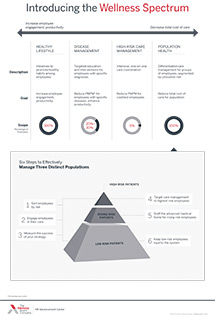Auto logout in seconds.
Continue LogoutOlympic athletes are always looking for an edge to get them past the competition—and increasingly, that means following an "extraordinarily fine-tuned diet," according to the dieticians and nutritionists working with Team USA, Julia Belluz writes for Vox.
Understand the wellness spectrum and promote healthy habits at work
Calories, by winter sport
Those of us who aren't Olympic-level athletes need about 1,600 to 3,000 calories a day, according to the U.S. Dietary Guidelines. However, Olympic athletes must carefully calibrate their calorie intake to their daily practice and overall sporting event, and so they team up with dieticians and nutritionists to generate nuanced diet plans.
According to Belluz, dieticians calculate the correct number of calories for athletes based on the type and duration of practice, how much energy the athletes are likely to burn, and how heavy or light they need to be for their competition. For example, among Winter Olympic athletes, ski jumpers—who veer toward the lighter side to optimize their performance—eat very little, consuming an average of just 1,300 calories each day. Susie Parker Simmons, one of the two senior sports nutritionists for the United States Olympic Committee, explained that ski jumpers "come from a large height, come down, and fly as far as they can, so they have to weigh extremely light. The lighter you are, you fly farther."
The calorie intake of other Winter Olympic athletes varies substantially, with:
- Figure skaters consuming between 1,800 and 3,000 calories per day;
- Snowboarders consuming between 2,200 and 3,200 calories per day;
- Short-track speed skaters consuming between 2,800 and 3,500 calories per day;
- Long-track speed skaters consuming between 2,800 and 4,000 calories per day;
- Alpine skiers consuming between 2,800 and 4,000 calories per day;
- Ice hockey players consuming between 2,800 and 4,000 calories per day;
- Nordic combined athletes consuming between 3,000 and 5,000 calories per day;
- Biathlon athletes consuming between 3,000 and 5,000 calories per day; and
- Cross-country skiers—who have the highest energy expenditure of any athlete, according to Belluz—consuming between 4,000 and 7,000 calories per day.
Athletes will also tweak their calorie intake based on their day-to-day training, upping the calorie count for a high-intensity session and lowering it when they're engaged in more technical training or taking a rest day. In addition, athletes will change the type of calories they need based on their sport or training session: Someone who's focused on strength training will need more protein to facilitate muscle growth, while those focused on cardiovascular work will need more carbohydrates, according to Belluz.
For instance, Joanna Irvine, a dietitian with the Canadian Sport Institute Pacific, said, "A longer endurance event, such as (the) cross-country skiing 50-kilometer event, athletes will carbohydrate load to maximize the glycogen and energy stores leading into their event." However, for something like bobsleigh or luge, less carbs are ideal. "A luge or bobsleigh athlete will look to be reactive and quick off the start line and wouldn't require the high carbohydrate intake," Irvine said.
A trend toward clean eating
While athletes vary widely on calorie intake, they generally have one thing in common: clean eating. Similar to the athletes competing in the 2016 Summer Olympics, who reported eating green smoothies and beet juice with salads and sandwiches, this year's Winter Olympic athletes said they are mostly eating mostly eggs, fruit, oatmeal, salmon, vegetables, and yogurt (Belluz, Vox, 2/18).
Understand the wellness spectrum
Programs aimed at promoting healthy habits among employees are likely to lead to improved employee engagement and productivity—but they're unlikely to reduce the total cost of care. To do that, you'll need to take a population health approach.
Don't miss out on the latest Advisory Board insights
Create your free account to access 1 resource, including the latest research and webinars.
Want access without creating an account?
You have 1 free members-only resource remaining this month.
1 free members-only resources remaining
1 free members-only resources remaining
You've reached your limit of free insights
Become a member to access all of Advisory Board's resources, events, and experts
Never miss out on the latest innovative health care content tailored to you.
Benefits include:
You've reached your limit of free insights
Become a member to access all of Advisory Board's resources, events, and experts
Never miss out on the latest innovative health care content tailored to you.
Benefits include:
This content is available through your Curated Research partnership with Advisory Board. Click on ‘view this resource’ to read the full piece
Email ask@advisory.com to learn more
Click on ‘Become a Member’ to learn about the benefits of a Full-Access partnership with Advisory Board
Never miss out on the latest innovative health care content tailored to you.
Benefits Include:
This is for members only. Learn more.
Click on ‘Become a Member’ to learn about the benefits of a Full-Access partnership with Advisory Board
Never miss out on the latest innovative health care content tailored to you.


